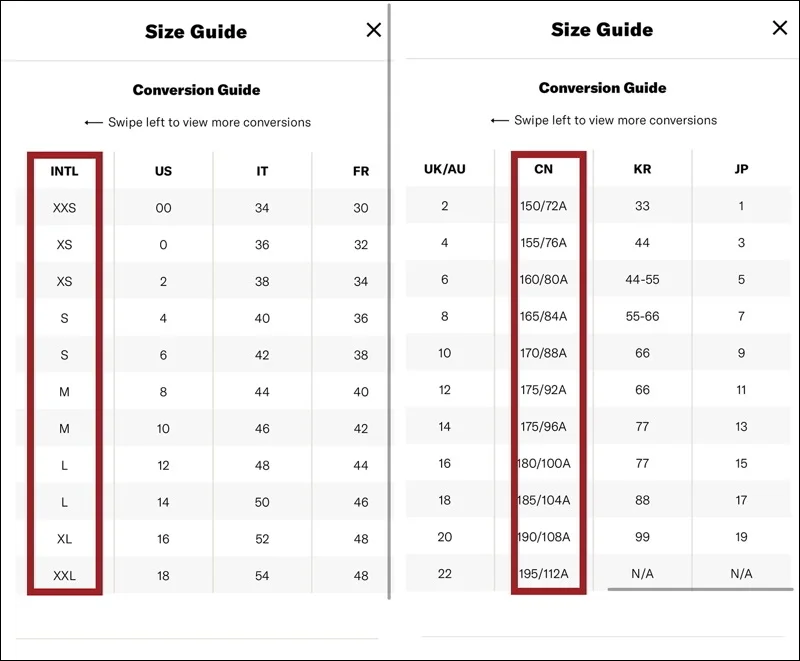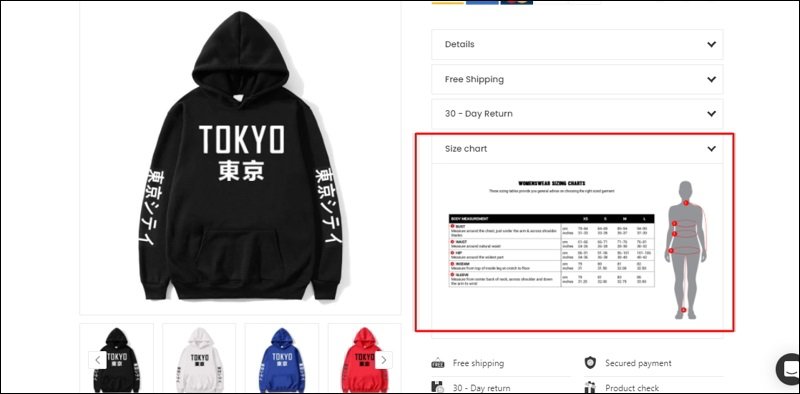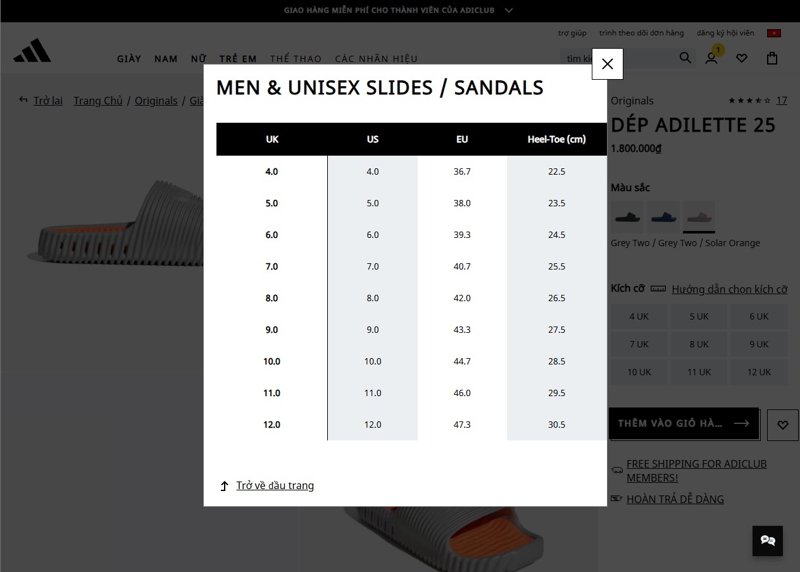Improve Size Charts: Reduce Returns And Boost Sales
Navigating the world of online fashion retail can often feel like a guessing game, especially when it comes to finding the right fit. As a small business owner in the clothing industry, you know that customer satisfaction hinges on this crucial element.
This article is designed to provide valuable insights and practical strategies that will directly impact your business. Specifically, you’ll discover how to improve your size charts. Mastering size chart improvement enables businesses to reduce return rates, increase customer satisfaction, and build stronger brand loyalty.
1. Understanding the challenge: Our research methodology
To inform these recommendations, we analyzed over 100 size charts from different national and international fashion retailers. This method was chosen because many fashion businesses face similar sizing challenges and develop solutions. These solutions can be tested through A/B testing or user research.
Because most website visitors (over 80% on average) use mobile devices, the study focused on mobile usability. The pictures in this article are shown in a desktop view so that more of the size chart can be seen.

2. Key recommendations for an effective size chart
Recommendations for improving size charts fall into several key areas. Our analysis of numerous webshops identified best practices for the following elements: interaction, international considerations, garment type, gender specificity, trigger placement, unit systems, brand variations, display methods, visual aids, and contact opportunities.
2.1. Make your size chart interactive and user-friendly
Many size charts are presented as static images. A noticeable number aren’t even optimized for desktop screens, let alone mobile devices. Some even require downloading a PDF. Simple interactions, like switching between inches and centimeters, or a mouse-over effect on desktop tables, can make the size chart more user-friendly.
In addition to a ‘cm/in’ toggle, some retailers offer the ability to select your size directly within the size chart pop-up. This selection can be based on manually measured garment dimensions. Additionally, the size chart pop-up might display information about how the garment fits and the model’s measurements in the product photos.
2.2. Include international size conversions
International sizes are far from uniform. For instance, an Italian size 36 isn’t the same as a German size 36 or a French size 36. This is because clothing brands seemingly adapt their sizes to the average body type of the local population. If only a numerical size is displayed (e.g., 36), it becomes very difficult for customers to choose the correct size for their body.
This often results in a higher return rate if the garment doesn’t fit well. Therefore, it’s advisable to account for international sizes in the size chart and provide conversions between different international sizing systems. Displaying garment measurements in centimeters/inches can also aid customers in selecting the appropriate size.
Some retailers allow customers to view sizes in various international sizing systems (EU, DE, UK, AU, US, IT, BR, etc.). They also offer a comparison between product dimensions and body dimensions (in centimeters/inches). An image may also be included to visually demonstrate how those dimensions relate to a body.

2.3. Provide specific charts for each garment type
Different types of garments have distinct measurements. For example, length is crucial for trousers, while cup size is important for bras, among other measurements. Many online shops offer multiple size charts, but finding the correct one can sometimes be challenging/time-consuming. It is therefore best practice to only display the size chart relevant to the specific garment type being viewed on the product page.
Certain webshops immediately present the size chart corresponding to the type of clothing for which the size chart is being accessed. This eliminates an extra step for customers and avoids potential frustration.
2.4. Offer gender-specific sizing information
Similar to garment type, there are also different size charts for men, women, and children. Again, it’s crucial to instantly present the correct size chart when a customer clicks through from a relevant product page on the website.
Some retailers choose to only show size charts for the appropriate gender upon clicking through. This immediately clarifies to each gender that they are in the correct section. However, it might still require an extra step to actually view the correct size chart for the specific product type.
2.5. Optimize the placement and design of the trigger
Online shops use a variety of triggers to open the size chart. The trigger is often located near the size selection area, but it can also be found within the product properties. Some triggers only become visible after a customer initially opens the size selection. Besides positioning, the icon used also varies; often, it’s a ruler or measuring tape.
The text used in the trigger is also quite diverse. Examples include: “size chart,” “size guide,” “size information,” “what’s my size,” “find your size”. One retailer uses the words “Size Chart” below the size selection boxes. Because it uses capital letters frequently and lacks color or underlining, the link isn’t immediately obvious, but this might be intentional.

2.6. Offer multiple units of measurement (cm/in)
Most of the world uses centimeters for measurements. However, some countries, including the United States, still use inches. To simplify size selection for customers, it’s recommended to include a toggle that allows viewing the size chart in both centimeters and inches. For businesses primarily serving a specific region, the default value can be set accordingly (e.g., cm for many European countries).
Some retailers implement such a switch, enabling size charts to be viewed in both inches and centimeters.
2.7. Provide brand-specific size charts
Different dimensions are assigned per size not only across countries but also across different brands. For instance, a size S shirt from one brand will have different dimensions than a size S shirt from another brand. To prevent customers from returning products because “their usual size doesn’t fit,” it can be beneficial to display separate size charts for each brand.
Ideally, this should be pre-selected, similar to type and gender, when accessed from a product page. Some retailers show separate size charts for different brands of a particular item (e.g., shirts). They also differentiate between fits, such as ‘Regular fit’ and ‘Slim fit’.
2.8. Optimize the display method: pop-up, slide-in, or on-page
The method of displaying a size chart also varies among online shops. The most common methods include:
- On the product page: The relevant size chart is displayed directly within the content without requiring any interaction.
- In a pop-up: The size chart appears in an ‘inline popup’ or ‘lightbox’ after the customer clicks on a trigger.
- With a slide-in: The size chart appears in an ‘overlay’ that slides over the content from the side of the screen.
One retailer opts to have the size chart slide in from the side. On mobile devices, this completely covers the screen, maximizing its usability.

2.9. Use images and visual aids to guide customers
Many online shops display an image or photo that clarifies precisely where measurements should be taken. This can assist customers in determining their correct measurements and, consequently, selecting the right size. In some cases, the image also shows the dimensions of a specific size after it has been selected.
Some retailers include an image showing the dimensions for each size. The gender and product type are also pre-selected, and a switch between inches and centimeters is provided.
2.10. Provide contact options for sizing help
The high number of returns indicates that customers struggle with determining the right size for themselves. Besides implementing all the previously mentioned optimizations, a webshop can also offer the option to contact customer service.
This can potentially increase conversion rates, reduce the number of returns, and boost customer satisfaction, making it a worthwhile investment. Observed options include initiating a video call or offering a standard chat feature.
Some brands, for example, utilize a video chat feature. In their case, it also functions as a kind of ‘style advice’ session, where not only the size of a specific item is discussed but also broader styling tips.
Read more:
A well-designed size chart can significantly aid customers in determining their most suitable size. This can lead to a higher conversion rate and fewer returns. Examining a wide range of webshops has revealed various aspects to consider when presenting a size chart. These include: interaction, internationalization, type, gender, trigger, units, brand, display, image, and contact options.






















